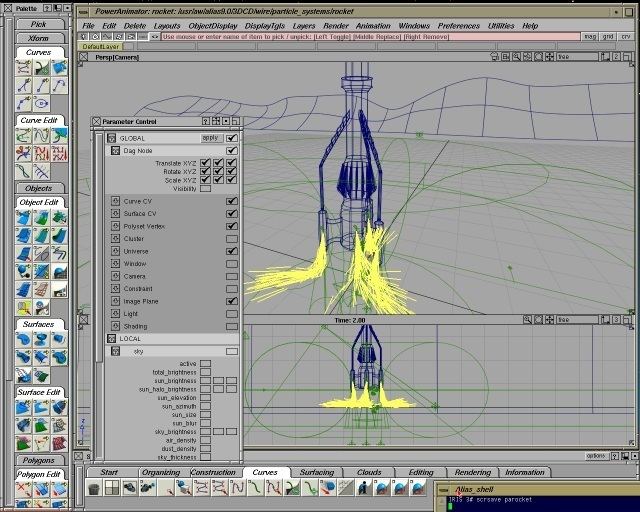Operating system | ||
 | ||
Initial release 1990; 27 years ago (1990) Stable release 9.0.2 / July 22, 1999; 17 years ago (1999-07-22) | ||
PowerAnimator and Animator, also referred to simply as "Alias", the precursor to what is now Maya and StudioTools, was a highly integrated industrial 3D modeling, animation, and visual effects suite. It had a long track record, starting with Terminator 2: Judgment Day in 1991 and ending in Star Wars: Episode I – The Phantom Menace in 1999. PowerAnimator ran natively on MIPS-based SGI IRIX and IBM AIX systems.
Contents
The software
The software itself featured one of the most complex user interfaces ever created, which allowed for an incredible amount of control over scene parameters, but made many tasks, such as animation, cumbersome and counterintuitive. It was expensive as well, apart from the enormous cost of SGI systems at the time. The standalone software retailed for $7,500, and was also sold with other modules, with a PowerPack containing all modules for US$30,000.
Alias PowerAnimator 9.0 documentation
History
PowerAnimator was launched in 1990.
In 1997, John Gibson, Rob Krieger, Milan Novacek, Glen Ozymok, and Dave Springer were presented with the Scientific and Engineering Award for their contributions to the geometric modeling component of the PowerAnimator system. The citation was:
"The Alias PowerAnimator system is widely regarded in the computer animation field as one of the best commercially available software packages for digital geometric modeling. Used by many motion picture visual effects houses, it has been a benchmark for comparison of modeling tools and has had a major influence on visual effects and animation."
Television and film
The software's more notable contributions to the entertainment industry can be found in films like The Abyss, Jurassic Park and Terminator 2: Judgement Day.
PowerAnimator was used to create the water creature in the 1989 film The Abyss, as well as the T-1000 character in Terminator 2: Judgment Day, at a cost of $460,000 per minute. It was also used heavily for the many visual effects of the 1996 film Independence Day. PowerAnimator also served as the solution used to produce South Park episodes digitally before production was moved to Maya. The title sequence of Disney's One Saturday Morning was created using Alias Wavefront Power Animator.
Game development
PowerAnimator was also used in game development, in particular as a part of Nintendo 64's SGI-based developers kit. It saw some use for modeling, texturing, animation and realtime effects for other titles and platforms as well.
Notable titles:
